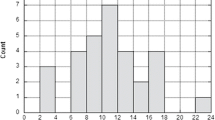Abstract
Objective: Among uremic patients on hemodialysis, infectious complications leading to a high incidence of morbidity and mortality are a well-documented problem. In this multi-dose study, the safety, tolerance, and pharmacokinetics of cefepime during high-flux hemodialysis were investigated and an improved dosing schedule is presented.
Methods: Six long-term hemodialysis patients received 2 g cefepime i.v. at the end of hemodialysis three times per week.
Results: Trough levels of cefepime were 23.3 ± 7.3 mg/l and peak serum concentrations 165.6 ± 48.7 mg/l. After 3.5 h of high-flux hemodialysis, 72.2 ± 6.4% of cefepime was eliminated. The intradialytic half-life was 1.6 ± 0.29 h and the interdialytic half-life 22.0 ± 2.14 h.
Conclusion: A dosage of 2 g cefepime after each hemodialysis session achieved drug levels well above the minimal inhibitory concentration (MIC)90 for most of the target pathogens. Thus, the described dosing schedule is an efficient and cost saving antmicrobial therapy for severe infections in long-term hemodialysis patients with no residual renal function.
Similar content being viewed by others
Author information
Authors and Affiliations
Additional information
Received: 12 October 1999 / Accepted in revised from: 12 January 2000
Rights and permissions
About this article
Cite this article
Schmaldienst, S., Traunmüller, F., Burgmann, H. et al. Multiple-dose pharmacokinetics of cefepime in long-term hemodialysis with high-flux membranes. E J Clin Pharmacol 56, 61–64 (2000). https://doi.org/10.1007/s002280050721
Issue Date:
DOI: https://doi.org/10.1007/s002280050721




